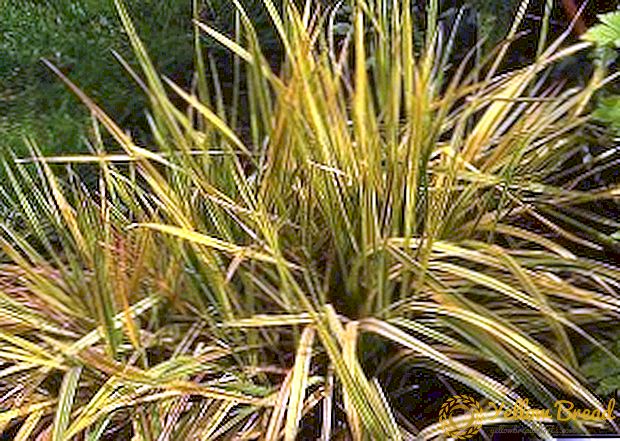 Chickens Hisex are well known among poultry farmers. Nevertheless, few know what they are, what advantages they have, how to properly care for them. A description of chickens Hisex Brown and Hisex White, as well as tips on buying and caring for them, can be found in our article. We hope this information will help you decide whether these poultry are suitable for your farm or not.
Chickens Hisex are well known among poultry farmers. Nevertheless, few know what they are, what advantages they have, how to properly care for them. A description of chickens Hisex Brown and Hisex White, as well as tips on buying and caring for them, can be found in our article. We hope this information will help you decide whether these poultry are suitable for your farm or not.
- Inference history
- Description and features of the cross
- Hisex Brown
- Hisex white
- How and where to buy to avoid cheating
- Housing arrangement for maintenance
- What to feed
- Care and vaccination
- Is it possible to grow young
Inference history
Little is known that Hisex is not an independent breed. This is the cross, which means that such chickens are the work of breeders, namely the Dutch company Hendrix Genetics Company, which crossed two breeds: leggorn and new hampshire. Selection was carried out not so long ago - in the 70s of the last century.  Before research, they set themselves goals:
Before research, they set themselves goals:
- remove individuals with high egg productivity;
- reduce the body weight of the bird, so that it needs a small amount of feed to survive;
- to chickens carried large eggs.
As a result of the experiments, chickens of two colors appeared - white and brown.These crosses were called Highsex White and Highsex Brown, respectively.
After the launch, the crosses first entered the territory of the then Soviet Union, in Ukraine. This happened in 1974. Having seen a number of advantages of this breed, the farms of other territories of the Union began to actively adopt the practice of breeding these birds. Later, from about 1985, crosses spread throughout Asia and America. And a few years later, in 1998, in Australia and Africa.
Description and features of the cross
Consider what eventually happened thanks to the two-year efforts of the Dutch breeders.
Main distinctive characteristics Hybrids of different colors are:
- neat and compact body;
- muscular body;
- high activity;
- graceful movements;
- calm character;
- a large wide red comb (for whites - piled on its side);
- smooth silky plumage;
- high productivity - 300-320 eggs per year;
- low body weight - up to 2 kg;
- high hatchability of offspring - 95%;
- high survival rate of adults - 99%;
- early puberty - 140 days;
- large egg size - 63-65 g;
- maintaining a high degree of productivity for two to three years.
Despite the fact that the crosses had only ancestors, the white highsex has noticeable differences from the brown highsex. 
Hisex Brown
Hisex Brown have a slightly higher body weight than whites: cocks can reach 2.4 kg, and females 2 kg. Such parameters allow to refer them to the egg-meat group of chickens.
Males have a brownish-golden plumage, sometimes they may have white endings of feathers on their wings.
Also brown highsexes are more productive than white counterparts - up to 363 pieces and most eggs - up to 70 g. Eggs are very durable. Their shell is dark. In order for the female to lay down a dozen eggs, she will need 1.28 kg of feed. The egg production of birds begins to fall in two or three years.
There are some differences in the nature of these chickens. They are very viable, calm, balanced. Usually easy to get along with other relatives in the hen house. Conflicts among them are very rare. Hisex Brown is better than the white relatives, suffer cold. It is easy to get used to the introduction of new feed. People usually get along.
Hisex white
White highsexes, as a rule, reach a mass of about 1.7-1.8 kg. Their egg production is 280 eggs per year. Egg mass - 63 g. Eggs are distinguished by a low content of cholesterol. Often white chickens carry eggs with two yolks.
Hisex White is very mobile and active. Roosters may show aggressive behavior. When containing white highsex it is necessary to remember that they need mineral substances that must be introduced into the feed. In addition, it is desirable to provide them with the conditions and feed, most close to those that they love. To feed, they are generally picky. The inconsistency of the parameters can provoke stress in chickens, which leads to a decrease in egg production.
Naturally, many people are interested in the question: when the highsexes begin to fly. This usually happens when they are about 140 days old (about five months).
In addition to the above advantages, birds of this breed have high resistance to:
- infectious diseases;
- helminths;
- fungal diseases.
How and where to buy to avoid cheating
It is important to initially acquire high-quality and healthy individuals. This can be done only on specialized poultry farms with a good reputation or agro-industrial enterprises.
When purchasing chickens should pay attention to such factors:
- down color: in males, it will be lighter than in females; layers will be brownish;
- beak shape: if it is bent, it means that the bird is sick and you should not buy it;
- mobility: chickens must run and react to sounds;
- condition of the umbilical cord: there should be no leakage from it and blood to flow;
- the purity of the cloaca;
- stool condition: green and too thin litter indicates disease.
It is better to give preference to three-day chickens.  If you acquire young, but already matured individuals, then it is necessary to pay attention to their behavior - they must be alive, mobile, be in constant search of food. A comb in healthy chickens should be of a bright color, well developed. Also about the health of the hens will tell their plumage: it should be clean, smooth and shiny.
If you acquire young, but already matured individuals, then it is necessary to pay attention to their behavior - they must be alive, mobile, be in constant search of food. A comb in healthy chickens should be of a bright color, well developed. Also about the health of the hens will tell their plumage: it should be clean, smooth and shiny.
Housing arrangement for maintenance
Both white and brown crosses need to create decent conditions. Recall that the closer they are to the standards recommended by manufacturers, the more eggs a hen can give.
Here are a few minimum requirementswhich chickens should be provided with:
- High-quality dry bedding, which must be regularly cleaned and replenished. It should be from hay or straw. Sawdust and peat are allowed. Periodically litter must be turned.
- Warm and spacious chicken coop, with good ventilation, but without drafts (no more than four individuals per 1 cubic meter). In winter, the temperature in it should not fall below + 12 ° C.This is the minimum at which the hens can "work." The best temperature for them is + 15-20 ° C.
- Availability of drinkers with constantly replenished clean water.
- Equipment perches for rest and sleep (at a distance of 60 cm from the floor) and nests for hatching eggs.
- Summing up additional lighting, which should work at least 10 hours a day.
What to feed
When placing crosses in cages, it is recommended to feed them with compound feed. White hybrids need about 106 g per day, a little more brown - 110 g.
If chickens are kept on the floor, and walking in open space enters their day mode, then they will need more feed. This is explained by the greater expenditure of energy and the presence of stressful situations when interacting with the external environment.
As a result, the metabolic processes in birds will proceed faster. Therefore, with this content they are given as much feed as non-hybrid layers, including a variety of ingredients. The diet in this case should be balanced - it is important to consider the recommended amount of amino acids, vitamins and minerals, nutritional value. The best in this regard is the industrial feed.  Since the latter is quite expensive, there is an option to save and make food. personally. For this you will need:
Since the latter is quite expensive, there is an option to save and make food. personally. For this you will need:
- wheat in the proportion of 40%;
- corn - 40%;
- legumes - 20%.
From time to time it will be necessary to add a complex of vitamins and minerals to such food.
In feed, it is also advisable to mix fish (fresh), fish meal, carrots, pumpkin, cake, nettles.
Care and vaccination
We have already written about the importance of clean litter and the chicken coop itself. Indeed, it is an important key to the prevention of infectious diseases and worms. It is necessary to carefully control the absence of parasites. To prevent their occurrence, you can put several containers in the hen house in which to pour ashes with sand. It is they who help the birds escape from fleas.  A prerequisite for the maintenance of crosses is the constant availability of clean water. Periodically for disinfection it is possible to add a solution of potassium permanganate.
A prerequisite for the maintenance of crosses is the constant availability of clean water. Periodically for disinfection it is possible to add a solution of potassium permanganate.
The best performance indicators will show those chickens who have the opportunity to walk.
Despite resistance to most diseases, crosses need to be vaccinated against paralysis, Gambro and Newcastle diseases.
Is it possible to grow young
It is possible to bring the younger generation of highsexes, however, this will be problematic: an incubator or the attraction of a layer from another breed will be required. The point is that in laying hens missing maternal instinct. However, it is still important to understand that it is unlikely that it will be possible to bring high-quality young animals themselves, and it is better to purchase them.
The eggs for laying in the incubator must be of high quality. It is advisable to purchase them at a proven poultry farm. It is important to select the incubation material with an average weight of at least 55 g. Too large need not be taken.
Before laying the material in the incubator, it is necessary to warm it to room temperature - approximately to + 25 ° С. Next, you need to set the mode that corresponds to the removal of chickens. If all the required conditions are met, the chicks should be born 20-21 days after laying.  At first, they will need a temperature of + 27-33 ° C and providing around-the-clock illumination.Grains should prevail in the feed, and when the chicks begin to grow rapidly, it is advisable to feed them with factory feed.
At first, they will need a temperature of + 27-33 ° C and providing around-the-clock illumination.Grains should prevail in the feed, and when the chicks begin to grow rapidly, it is advisable to feed them with factory feed.
At two to three months of age individuals of different sexes will need to be divided. Roosters can be given less feed than chickens.
The choice of chickens egg direction today is great. Breed Hisex among the ten best of them. Many farmers have already seen that they provide a fairly large number of high-quality and tasty eggs and at the same time consume small amounts of feed. Resistance to diseases and unpretentiousness in care should also be counted among their advantages. They are suitable for breeding in large poultry farms and in small households. It is more economical to keep the Hisex breed brown: its representatives are more egg-bearing, carry larger eggs, they can be used for meat.






